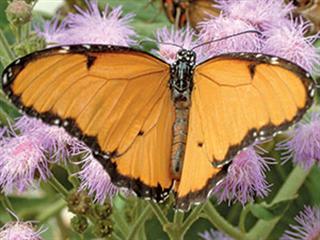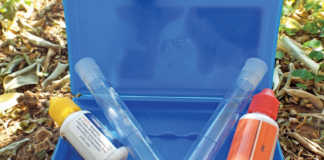
The emphasis will be on identification. Control measures discussed will be suggestions only, and it would be wise to consult your extension officer and other crop farmers for strategies to suit your area. We hope to help the reader ask the right questions when seeking guidance on control measures. A brief overview of the life-cycle of an insect helps to understand how to control it. Many commercial insecticides work only during a specific stage of the life cycle.
For example, ovicides target the egg stage, while larvicides attack the larvae. Some insecticides may target only the adults, while others are effective at all stages of development. In an integrated pest management system, many predatory insects prey on a pest at a specific stage in its life cycle. Most parasitic wasps, for example, only attack the larval (caterpillar) stage.
Differing reproductive cycles
The reproductive cycles of insects follow one of two quite different processes. The first is called incomplete metamorphosis (hemimetabolism), the second, more advanced, form is complete metamorphosis (holometabolism).
With very few exceptions, both share two characteristics. Once the adult stage has been reached, no further growth through moulting of the skin takes place. And only the adult can reproduce.
Incomplete metamorphosis
Grasshoppers, locusts and mantids are some of the insects that experience incomplete metamorphosis. There are three stages of development – egg, nymph (juvenile) and adult. The nymphs resemble miniature adults. They have mouthparts, compound eyes and, in many cases, feed on the same food as adults. They are wingless, however. With each successive moult, the nymph grows in size and becomes more adult-like. The major transformation occurs in the development of wings and reproductive organs.
Complete metamorphosis
This four-stage reproductive cycle is found in insects such as butterflies, moths, beetles and flies. The female lays her eggs in a variety of locations, usually on a host food plant. The eggs hatch into larvae, commonly called maggots in flies and caterpillars in moths and butterflies. The larvae are little more than cylindrical feeding machines with chewing or sucking mouthparts at one end and an anus at the other. They may have small eyes, or no eyes at all, several pairs of appendages for movement, and display bright colours to ward off predators.
They undergo four to eight moults, depending on the species. After the final moult, the larva becomes a pupa (chrysalis). Beneath the tough outer skin, a great transformation takes place. Tissue is reabsorbed and reassigned to new functions: wings, eyes, strong legs, reproductive organs and the digestive system develop. The pupal stage may last for several days, as is the case with flies, or months, in the case of butterflies and moths.
In fact, the pupal stage of many moths and butterflies may last all winter. The pupae may hatch only in the following summer when food is abundant. As will be seen in the forthcoming series, different insects are more destructive to crops at different stages of their development.
Paul Donovan is a biologist who has worked with reptiles and insects for more than 30 years in zoological collections in the UK. He is currently based in Botswana, where he advises farmers on the use of biological control agents. Contact him at [email protected]













